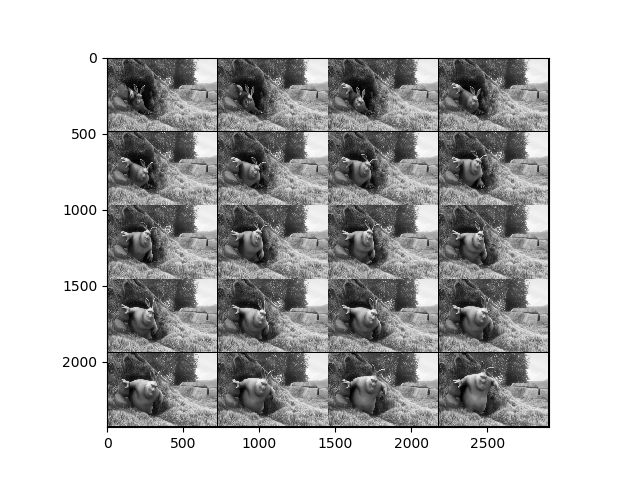Note
Click here to download the full example code
Custom frame selection¶
By default, you can use one of the five available options for frame
selection - {“auto”, “random”, “first”, “last”, and “middle”},
by passing it to the parameter mode. (View the documentation of
mydia.Videos for more information on what each of these does)
Internally, each of these options are mapped to a callable that returns a list of integers denoting the indices of the frames to be selected. The callable takes 4 non-keyword arguments:
total_frames(int): The total number of frames in the videonum_frames(int): The number of frames that you want to extractfps(int): The frame rate of the videorandom_state(int): Integer to seed the random number generator
You could create your own callable and pass it to the parameter
mode, gaining immense flexibility in the frame selection process.
The general format of the callable should be:
def func(total_frames, num_frames, fps, random_state):
# Create a list of integers denoting the required frame indices
frames_indices = []
# Do something
...
return frame_indices
Note
- There are no tests that validate the indices returned by the
callable and therefore, they must be within the range 0 to
total_frames. - Also, the frames are not repeated. That is, even if there are repeated indices, the number of frames are selected only for the unique values in the index array.
Warning
If you are passing a callable to mode, then make sure that
the number of frames (indices) it returns is equal to the value of
num_frames. If this condition is not met, then this would mean
that the number of frames selected is different for different videos,
and therefore they cannot be stacked into a single tensor.
Examples¶
- Let’s say we want the first 20 even numbered frames (starting from 0, 2, 4, …), assuming that the video has atleast 20x2 = 40 frames.
# Imports
import matplotlib.pyplot as plt
from mydia import Videos, make_grid
# Initialize video path
video_path = r"./sample_video/bigbuckbunny.mp4"
# Custom frame selector
# `*args` is used because we do not need the arguments for generating the
# index array
def even_frames(*args):
return [i for i in range(0, 40, 2)]
# Configuring the parameters
# Passing `even_frames` to `mode`
reader = Videos(target_size=(720, 480), to_gray=True, num_frames=20, mode=even_frames)
# Call the 'read()' function to get the required video tensor
# which will be of shape (1, 20, 480, 720, 3)
video = reader.read(video_path)
print("The shape of the video tensor:", video.shape)
# Plot the video frames in a grid
grid = make_grid(video[0], num_col=4)
plt.imshow(grid, cmap="gray")

Out:
The shape of the video tensor: (1, 20, 480, 720, 1)
Note that `make_grid` can also take some arguments for customizing
the grid. For more info, view the documentation of the function
mydia.make_grid().
Total running time of the script: ( 0 minutes 0.526 seconds)
